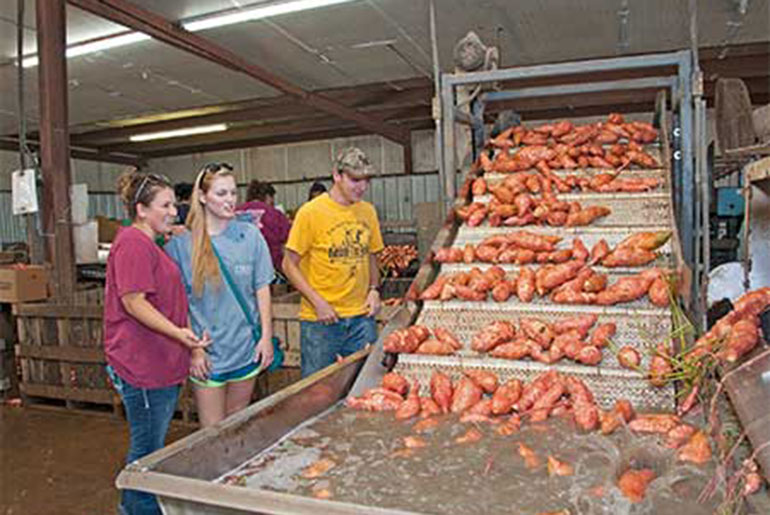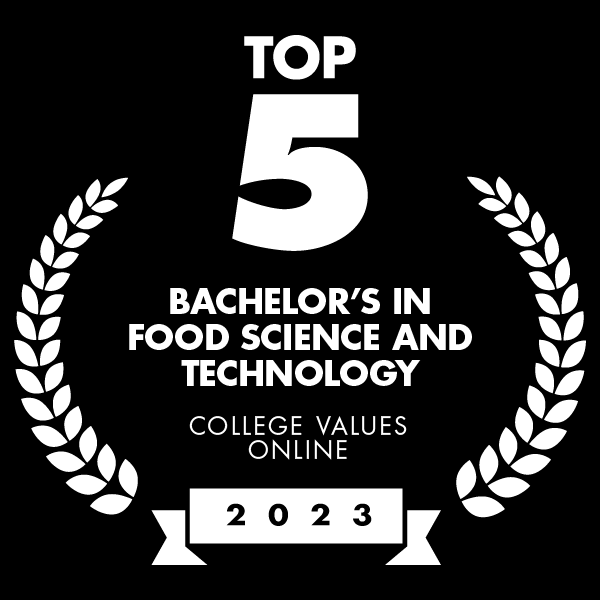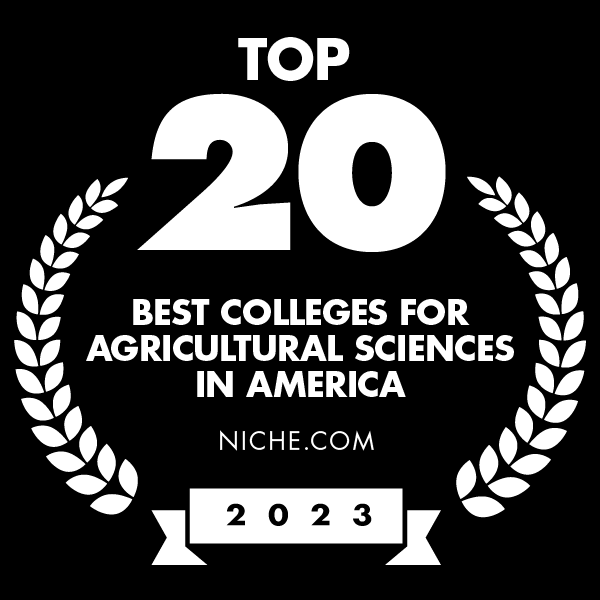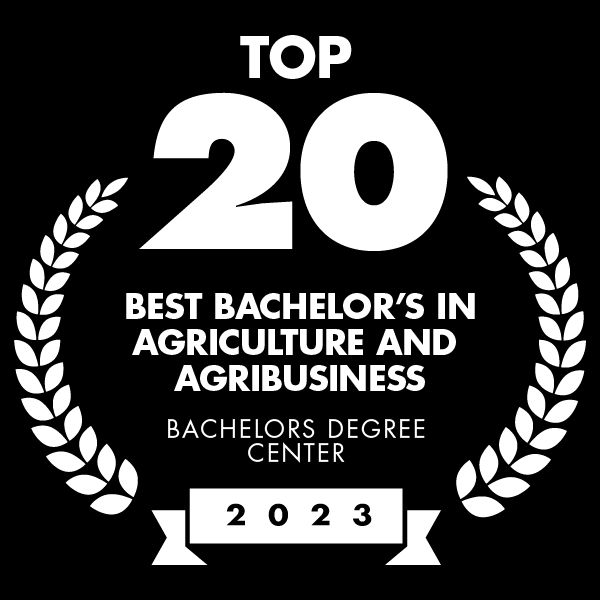The information presented on this page may be dated. It may refer to situations which have changed or people who are no longer affiliated with the university. It is archived as part of Mississippi State University's history.
Alternative uses explored for culled sweet potatoes
Author: Linda Breazeale

Students at a sweet potato farm (Photo by Kat Lawrence)
Challenged to develop alternative uses for culled sweet potatoes, Mississippi State University students really thought outside the box.
Cosmetics, feminine hygiene products and deer attractants were among the student proposals in the first Sweet Potato Innovation Challenge at MSU. Phase one of the challenge took place during the fall semester, and student presentations in December included requests for research and development grants.
When consumers come home with a box of sweet potatoes, they have high expectations for the product. Potatoes that do not meet those standards because of shape, size, color or other factors, typically are sold for processing. However, in recent years, the supply of processing grade potatoes has exceeded demand, resulting in low prices. Potatoes that cannot even meet processing criteria may be left to rot in the fields.
"I hate when any potato is unsold," said Jamie Earp, a grower in Chickasaw County and member of the judging panel. "We heard a lot of good ideas, but most of them will take some time to develop."
Earp said many of the state's canning potatoes have been going to a plant in Louisiana that recently closed. That closure could create an even greater marketing challenge for canning quality potatoes.
Stephen Meyers, sweet potato specialist with the MSU Extension Service, said 20-25 percent of harvested potatoes never make it to the fresh market for various reasons.
"These culled potatoes represent a loss of income for growers and for the state of Mississippi," Meyers said. "Our hope was that these class projects would produce some unique ideas from our students."
The five participating classes were based in the School of Human Sciences, College of Education, Department of Agricultural and Biological Engineering, and Department of Food Science, Nutrition and Health Promotion.
April Heiselt, director of MSU's Center for Advancement of Service-Learning Excellence, helped develop the challenge. She said MSU faculty developed service-learning classes and took their students on field trips to the heart of the state's sweet potato industry to learn about the process and challenges of growing and marketing potatoes.
"Many of the students had no idea about the impact of sweet potatoes on the state of Mississippi," she said. "Although the students learned about sweet potatoes and creating new products, including copyrights and trademarks, the projects were about more than that. They involved critical thinking and having the students consider the larger economic impact of this important crop."
Charles Freeman, assistant professor of fashion design and merchandising, said he anticipated his students developing ideas related to fabrics. Instead, he commended them on their ability to think outside the box and beyond their majors.
"They came up with proposals for a cellulose acetate product, an additive for cosmetics and a vitamin drink," he said. "They worked with professionals in other departments on their concepts."
Freeman used the challenge to inspire creativity in his students. He introduced them to a "think tank" classroom at the Mitchell Memorial Library on campus.
"The goal was to have open discussion with students helping each other. They started with broad ideas and narrowed them down to specific concepts," Freeman said.
Wes Schilling, a food science professor, said he was pleased with his students' efforts. They conducted taste panels for several different food products they developed.
"They took a real-world need— to develop an alternative use for culled sweet potatoes—and developed ways to add value to the product," he said. "They were thinking very broadly about the impact on farmers, consumers and food processors."
The projects culminated with "Shark Tank" style proposals in front of judges representing academia, sweet potato growers and industry. Student groups had five minutes to make their presentations, and they answered questions from the judges for another five minutes. In that time, their goal was to persuade the judges to grant them funds for further research and development of their proposals.
Of the 23 projects presented to the judges, 11 received some funding for students to continue developing their ideas in the spring semester.
Date: 2015-01-08




